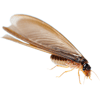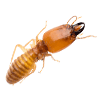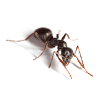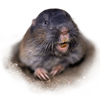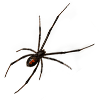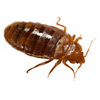Flying ants and flying termites look similar, but it’s important to know the difference when dealing with infestations. In this blog article, we will explore the key differences between them, discuss preventive measures, and highlight why a professional intervention may be necessary to manage infestations effectively.
Identifying Flying Ants and Flying Termites: While both flying ants and flying termites have wings, several features can help distinguish one from the other:
- Body Shape: Flying ants have a narrow “pinched waist” between their thorax and abdomen, giving them an hourglass-like figure. In contrast, flying termites have a broad waist, and their bodies appear more uniform in shape.
- Wing Length: When at rest, flying ants have wings of different lengths, with the front pair being longer than the hind pair. Conversely, flying termites have two pairs of wings that are equal in length.
- Antennae: Ants have elbowed or bent antennae, while termites possess straight antennae without any distinct bends or elbows.
- Coloration: Flying ants often have a dark-colored body with lighter wings. Flying termites, on the other hand, have pale or translucent bodies with wings that are uniform in color.
Preventing Infestations: Prevention is key when it comes to flying ant and termite infestations. Here are some measures Southern California homeowners can take to minimize the risk:
- Address Moisture Issues: Termites are attracted to moisture, so promptly fix any leaks or damp areas in and around your home. Ensure proper drainage, fix leaky pipes, and keep the area around the foundation dry.
- Remove Wood-to-Soil Contact: Termites thrive on wood, so eliminate direct contact between soil and wooden structures. Maintain a gap between soil and any wooden components such as decks, fences, or tree stumps.
- Seal Entry Points: Use caulk to seal cracks and crevices in your home’s foundation, walls, and windows. This helps prevent both ants and termites from entering.
- Proper Ventilation: Ensure proper ventilation in attics, crawl spaces, and basements to reduce moisture buildup, which can attract termites.
- Regular Inspections: Schedule periodic inspections by a pest control professional to detect early signs of infestations and address them promptly.
Why Professional Intervention is Necessary: While some DIY methods may provide temporary relief, professional intervention is often necessary for effective long-term pest control. Here’s why:
- Accurate Identification: Our pest control professionals are trained to accurately identify the species infesting your home. Proper identification ensures targeted treatment and prevents misdiagnosis.
- Comprehensive Solutions: Our technicians have access to a wide range of treatments and techniques specifically designed to combat flying ants and termites. We can tailor our approach to the severity of the infestation and the specific needs of your home or business.
- Preventive Measures: Pest control experts not only address the current infestation but also implement preventive measures to reduce the likelihood of future problems.
- Safety and Efficiency: Professional pest control ensures the use of safe and effective products while minimizing the risk to humans, pets, and the environment. Additionally, their expertise and experience allow them to resolve infestations efficiently.
Distinguishing between flying ants and flying termites is crucial for effective pest control. By understanding their differences, implementing preventive measures, and seeking professional intervention, homeowners can protect their homes from these damaging insects. Remember, when it comes to the health and safety of your home, it’s always better to be proactive and consult a pest control professional for the best possible outcome.
We Service South West Riverside County and North San Diego County. To schedule a free inspection of your home or business, give us a call at (760) 728-3000 or (951) 302-4990.
